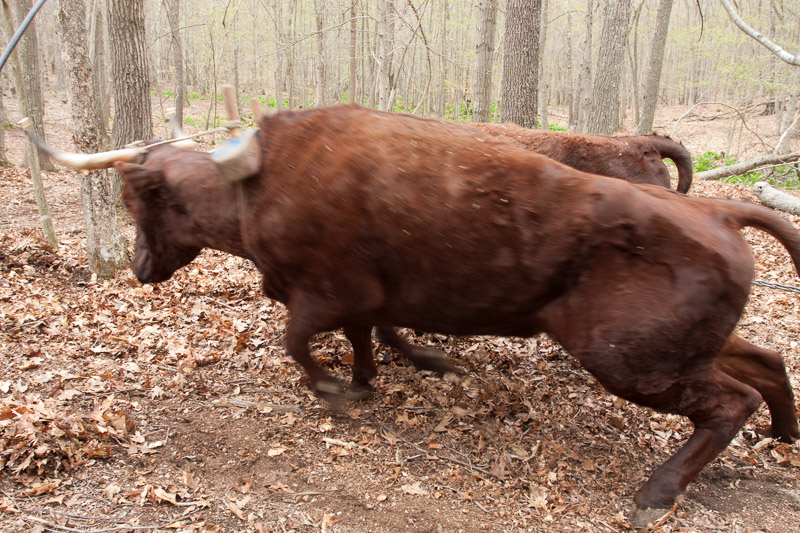 Red and Rock in action; Red (foreground) seems to be more tuned in to Earl’s direction, and also seems to be the harder worker of the pair.
Red and Rock in action; Red (foreground) seems to be more tuned in to Earl’s direction, and also seems to be the harder worker of the pair.
{ 0 comments }
Images of New England
From the category archives:
 Red and Rock in action; Red (foreground) seems to be more tuned in to Earl’s direction, and also seems to be the harder worker of the pair.
Red and Rock in action; Red (foreground) seems to be more tuned in to Earl’s direction, and also seems to be the harder worker of the pair.
{ 0 comments }
 After a tree is felled (in the back), it’s cut up into sections and dragged over and on to the skidder. Note the uneven cut on the log; Earl had to go full old school – cutting with an ax – after his chainsaw hung up before the tree fell.
After a tree is felled (in the back), it’s cut up into sections and dragged over and on to the skidder. Note the uneven cut on the log; Earl had to go full old school – cutting with an ax – after his chainsaw hung up before the tree fell.
{ 0 comments }
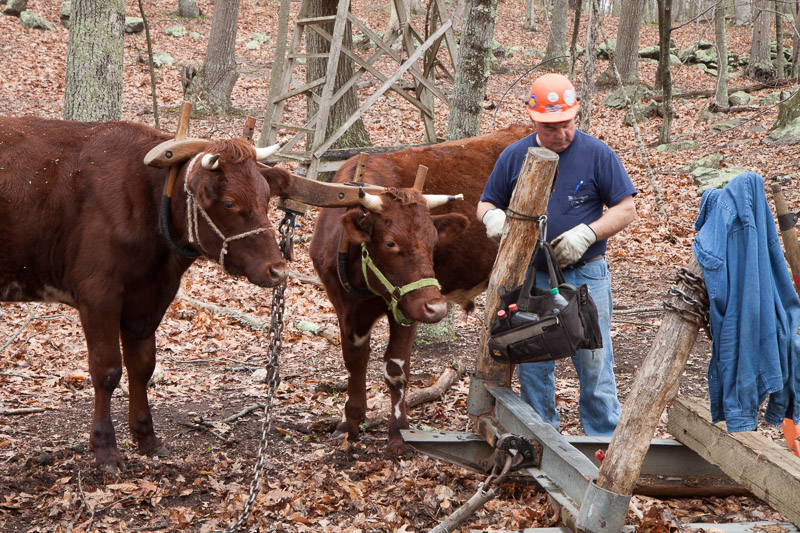 Tom, on the right, checking out Earl’s bag, while Lucky, on the left, off in a bit of an oxen trance.
Tom, on the right, checking out Earl’s bag, while Lucky, on the left, off in a bit of an oxen trance.
{ 1 comment }
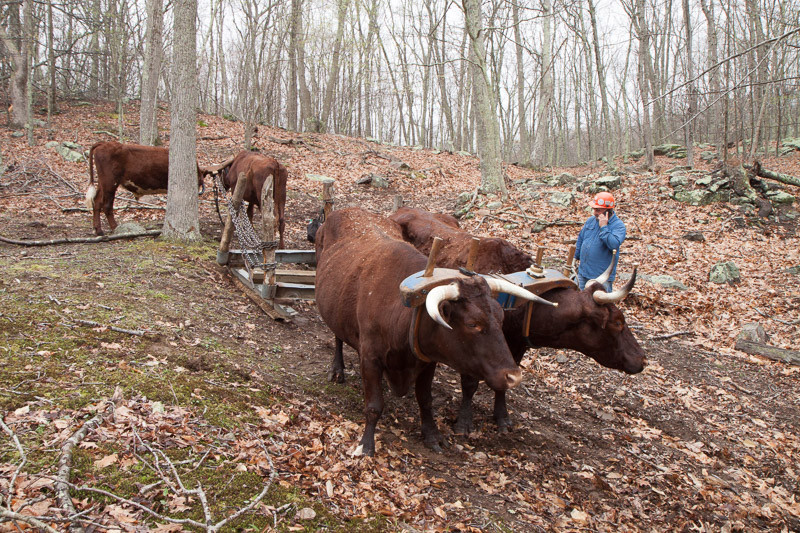 Oxen and cellphones – together after 6000 years or so.
Oxen and cellphones – together after 6000 years or so.
{ 0 comments }
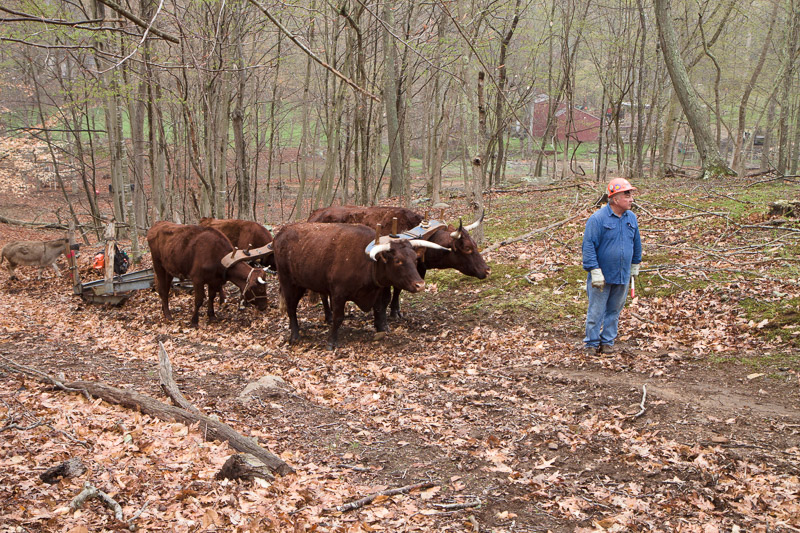 Which I would certainly want if I was pulling a third of my weight up a hill, even if I had help.
Which I would certainly want if I was pulling a third of my weight up a hill, even if I had help.
{ 0 comments }
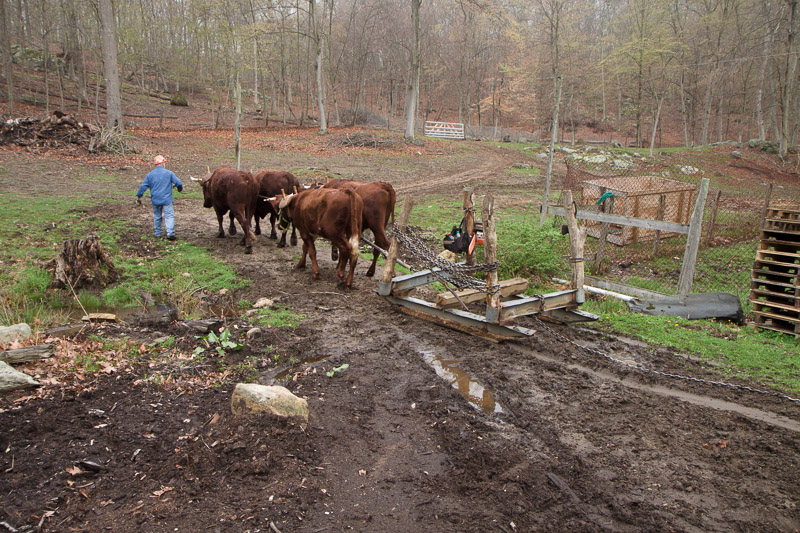 The back pair of oxen are young ones basically along for the ride/walk; it’s a training technique to acclimate them to actual pulling. The brunt of the work is being done by the lead oxen. The empty sled weighs about 500 lbs; fully loaded, probably 4000. Back home is mostly downhill.
The back pair of oxen are young ones basically along for the ride/walk; it’s a training technique to acclimate them to actual pulling. The brunt of the work is being done by the lead oxen. The empty sled weighs about 500 lbs; fully loaded, probably 4000. Back home is mostly downhill.
{ 0 comments }
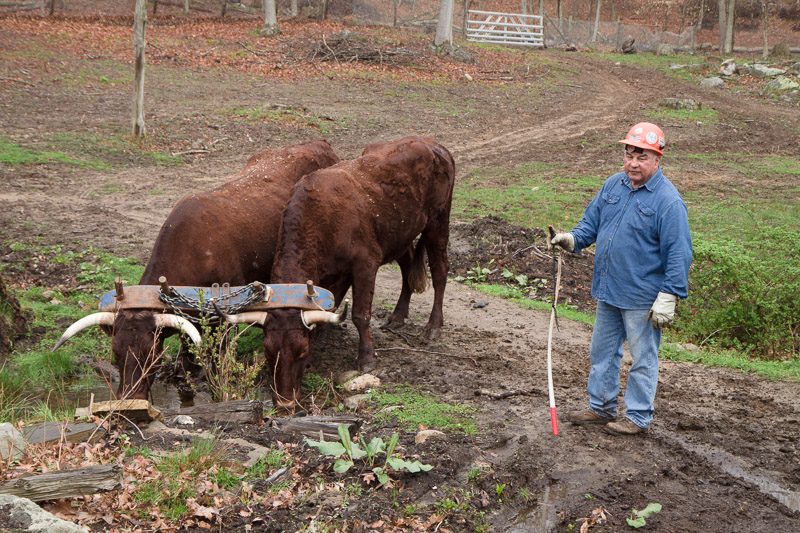 Earl’s family first settled this place in 1868, making him the fifth generation to work the land. The oxen are Red and Rock; Red (horns up) is a milking Devon, and Rock (horns out straight) is a beef Devon. They’re both about 7 years old, and just coming into their prime.
Earl’s family first settled this place in 1868, making him the fifth generation to work the land. The oxen are Red and Rock; Red (horns up) is a milking Devon, and Rock (horns out straight) is a beef Devon. They’re both about 7 years old, and just coming into their prime.
This stop at the watering hole is the prelude to their work day, which might encompass some six hours of logging, the oxen mostly on standby.
{ 0 comments }
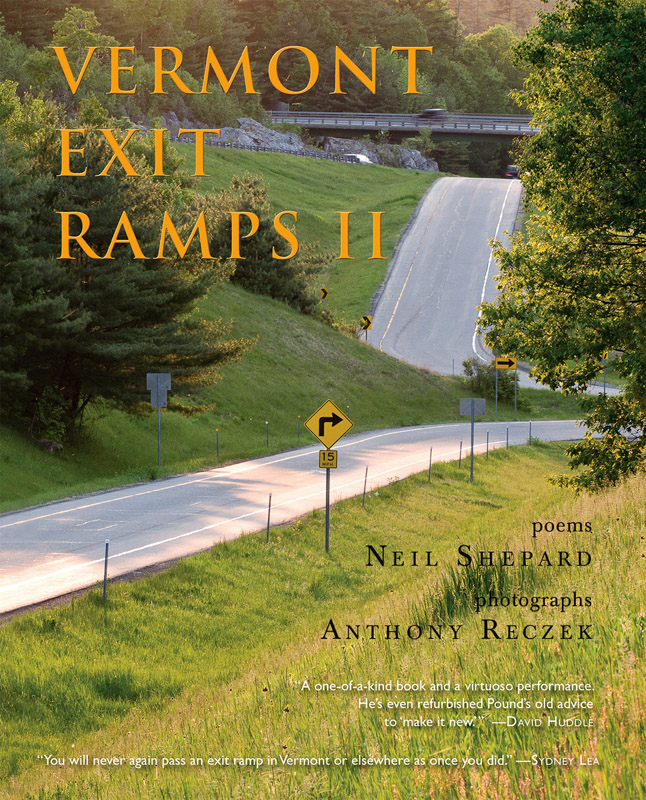 A few months ago, I happened upon a wonderful review of Vermont Exit Ramps II, by Laura C. Stevenson, published in the American Book Review. (Click on this link for the PDF: abr_vermont-exit-ramps-ii.)
A few months ago, I happened upon a wonderful review of Vermont Exit Ramps II, by Laura C. Stevenson, published in the American Book Review. (Click on this link for the PDF: abr_vermont-exit-ramps-ii.)
It turns out that she lives right next to “the Boyd Place” in Wilmington, where I have photographed in the dead of winter for the past few years. She is a talented writer with a significant body of work set in post-pastoral Vermont, and can be found online here. Many thanks for her permission to publish the review on this site.
See my earlier posts on VER II here and here. The easiest way to purchase would be in just about any bookstore in VT, or online here.
{ 0 comments }
My good friend Jose and I had dinner in Middletown CT a couple of weeks ago, and afterwards roamed the streets a bit. We lingered in front of this band for a couple of tunes, including one Jose requested, a song called “Por Mujeres Como Tu”, which you can listen to here (translated lyrics below). I later asked him what the song was about; he laughed and said ” women… alcohol…”.
He and his wife emigrated from Venezuela some years ago; it got me thinking about the song(s) I might request if we were in Venezuela and it was now my “home”.
Twenty years ago my wife and I went to France, and we took along a few CDs to help with any homesickness: Eat a Peach by the Allman Brothers, and Working on Wings to Fly, by Cindy Kallett. And though we never had to use them, it was nice to have them along.
Por Mujeres Como Tu (For Women Like You)
I’m becoming afraid and she’s realized it,
And that’s not very good for me,
If I want to keep her in my arms
It’d be better for her not to see me suffer.
I’m keeping myself in the failures,
And today I’m going to fix the situation.
It’ll be that I’ve always given too much
And in the excess I always end up hurt (lit. damaged).
For women like you, my love
There are men like me, I know
That we can lose ourselves
In alcohol
Because of a deception.
I’m keeping myself in the failures,
And today I’m going to fix the situation.
It’ll be that I’ve always given too much
And in the excess I always end up hurt (lit. damaged).
For women like you…
{ 0 comments }
This barn looks even better today than in 2007 when I took this picture. It’s been freshened up with red paint, and looks, well, 30 years younger and even more photogenic. The garden – from a distance anyway – looks like it’s just been marking time over the years.
{ 0 comments }